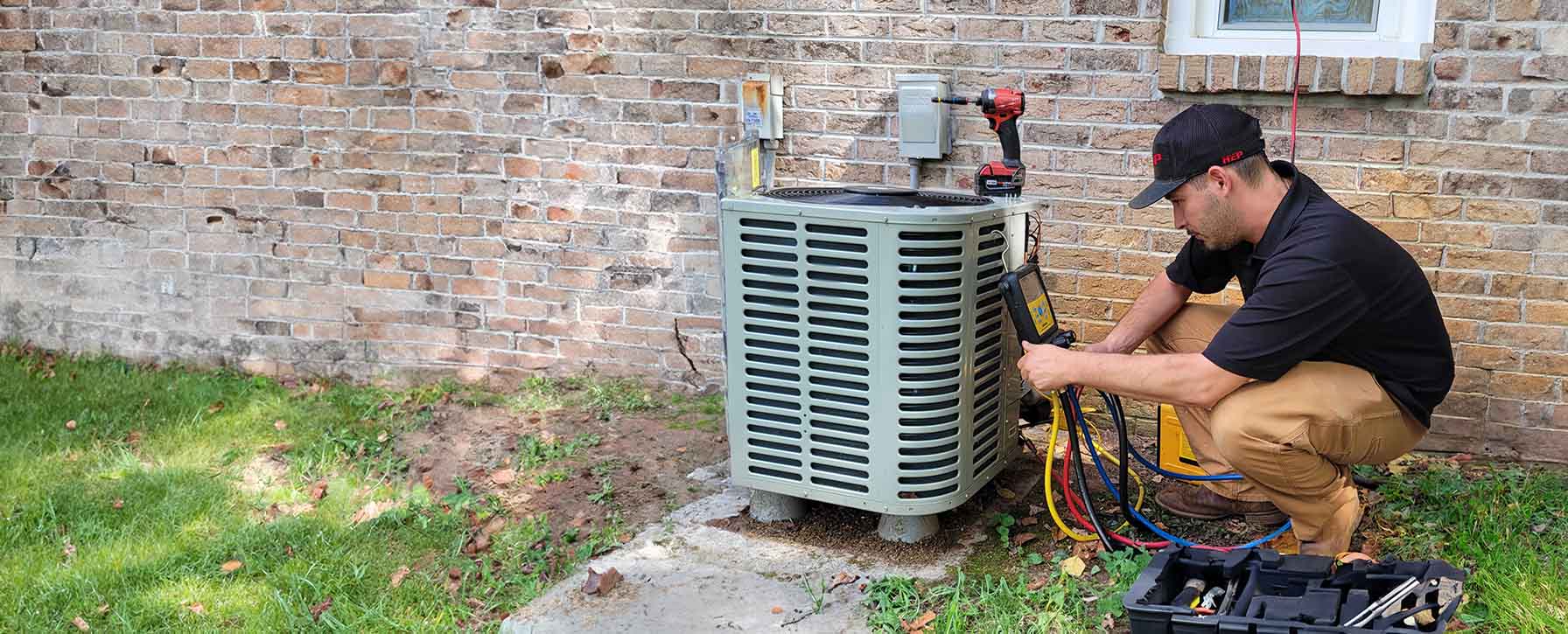

Energy Efficiency
Your trusted partner for professional home services. Quality workmanship, guaranteed satisfaction.




- HEP
- Energy Efficiency
Energy Efficiency | Ventilation and Air Quality | Heating and Air Conditioning | McMinnville
Breathe easier in McMinnville with HEP’s forward-thinking approach to energy-efficient heating and cooling. Our certified technicians fine-tune furnaces, heat pumps, and AC systems so they sip less power while keeping every room consistently comfortable, even during the Pacific Northwest’s damp winters and warm summers. By pairing high-efficiency equipment with smart thermostats and thorough duct sealing, we help you cut utility costs without sacrificing the cozy vibe you love.
Beyond temperature control, we focus on ventilation and air quality—because saving energy only matters if your indoor air is clean and healthy. From whole-home ventilators that exchange stale, humid air for fresh outdoor air to air purification technologies that capture pollen, smoke, and viruses, we tailor solutions to your family’s needs and budget. Trust HEP to create a greener, healthier home where you can breathe, relax, and enjoy life in McMinnville all year long.
FAQs
What does “energy-efficient HVAC” mean, and why is it especially important in McMinnville?
An energy-efficient heating, ventilation, and air-conditioning (HVAC) system is designed to deliver the same or better comfort while using less electricity or fuel than standard equipment. In McMinnville’s climate—characterized by cool, wet winters and warm, dry summers—your HVAC system often runs year-round. Choosing high-efficiency equipment reduces utility costs, lowers greenhouse-gas emissions, and keeps indoor humidity and temperatures more stable during seasonal swings.
How can upgrading to a high-efficiency heat pump reduce my utility bills?
Modern heat pumps use variable-speed compressors and electronically commutated motors (ECMs) that match output to your home’s exact load, avoiding the wasteful on/off cycling common in older units. A high Seasonal Energy Efficiency Ratio (SEER2) and Heating Seasonal Performance Factor (HSPF2) translate to as much as 40–50% lower electricity consumption for heating and cooling. Over an average McMinnville heating season, that can save several hundred dollars annually and often pays back the initial upgrade cost within 5–7 years.
What ventilation strategies improve indoor air quality without sacrificing efficiency?
Balanced mechanical ventilation, such as an Energy Recovery Ventilator (ERV) or Heat Recovery Ventilator (HRV), exhausts stale indoor air and supplies filtered outside air while transferring heat and moisture between the two air streams. This recovers up to 80% of the energy that would otherwise be lost, keeping fresh air moving through the home with minimal impact on heating or cooling loads—ideal for Pacific Northwest homes where tight building envelopes can trap pollutants.
How often should I change or clean HVAC filters to maintain efficiency and air quality?
In McMinnville’s pollen-rich spring and dusty late summer, replace or wash 1-inch standard filters every 30–60 days and high-capacity pleated or media filters every 3–6 months. A clogged filter can cut airflow by 10–15%, forcing the blower to work harder, raising energy use, and letting particulates circulate. Always follow the manufacturer’s MERV rating recommendations to balance filtration and system airflow.
Are there local incentives or rebates for installing energy-efficient HVAC equipment?
Yes. McMinnville Water and Light partners with the Energy Trust of Oregon to offer rebates for qualifying heat pumps, duct sealing, smart thermostats, and high-efficiency gas furnaces. State and federal tax credits—such as the Inflation Reduction Act’s 25C credit—can cover up to 30% of the installed cost of ENERGY STAR-certified equipment. We handle all paperwork and verify eligibility so you receive the maximum savings.
What routine maintenance keeps my HVAC system operating efficiently year-round?
1) Schedule professional tune-ups twice a year—once in spring for cooling, once in fall for heating. 2) Keep outdoor condenser and heat-pump coils free of leaves, grass clippings, and snow; maintain 18–24 inches of clearance. 3) Inspect ductwork for leaks or crushed sections and seal joints with mastic, not tape. 4) Test and calibrate your smart thermostat’s programming to match occupancy patterns. 5) Flush condensate drains and clean blower wheels to prevent moisture buildup and airflow loss. Consistent maintenance can improve efficiency by 10–20% and extend equipment life.